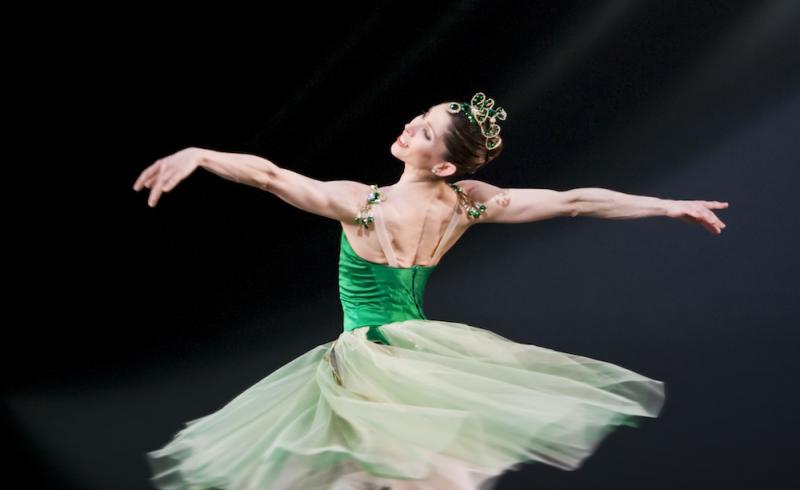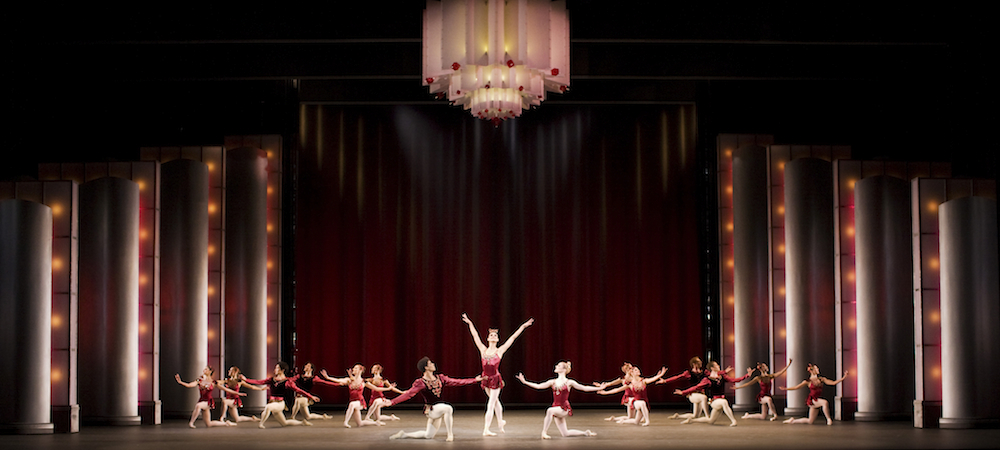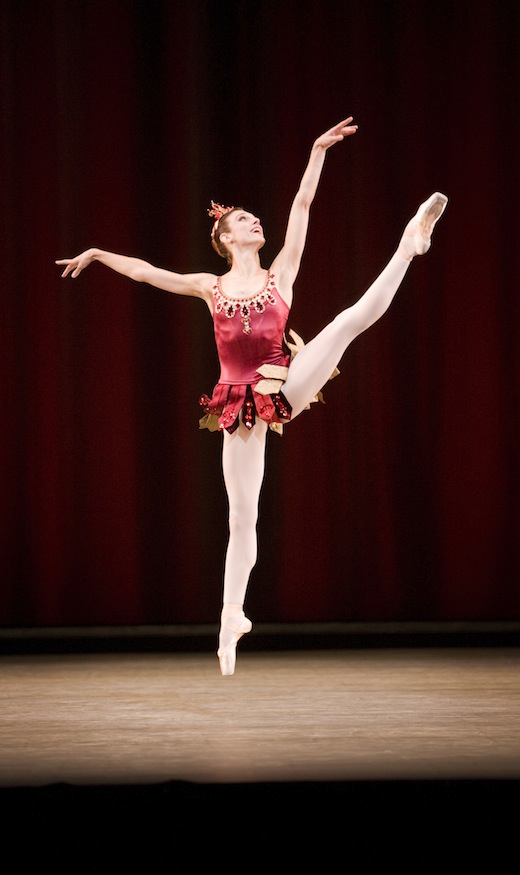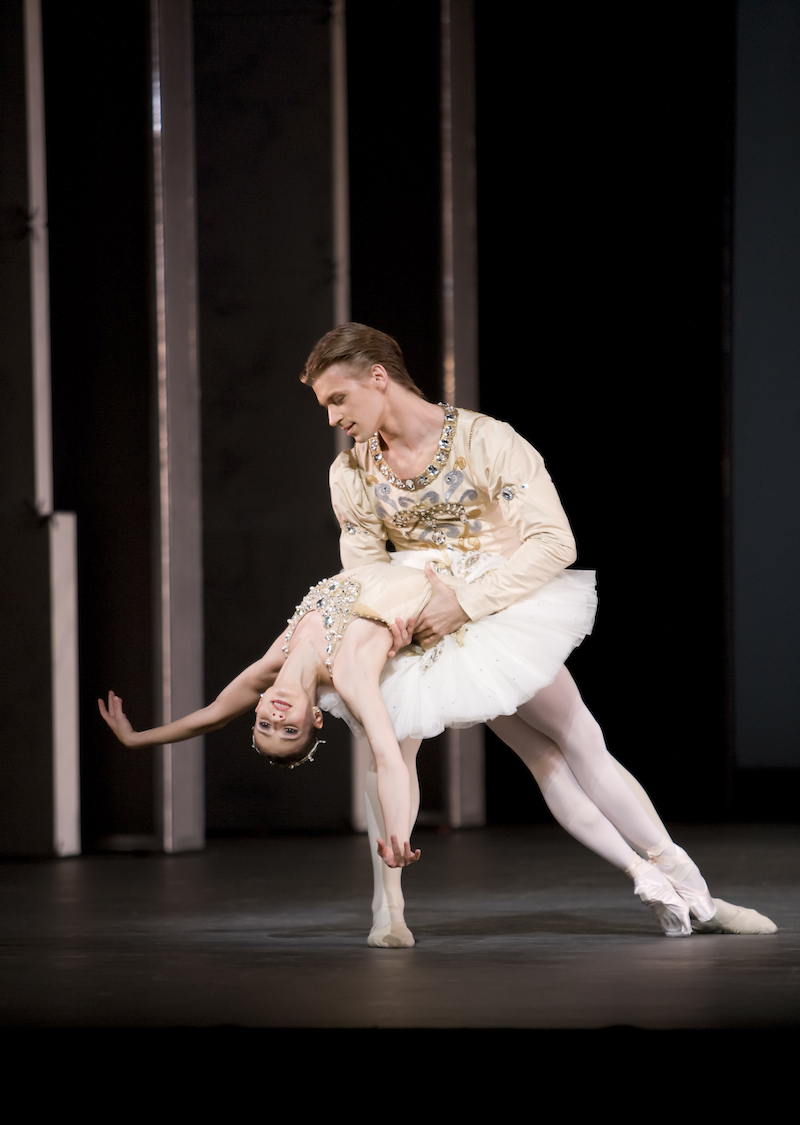Jewels, Royal Ballet | reviews, news & interviews
Jewels, Royal Ballet
Jewels, Royal Ballet
A trip to see Degas would do wonders for this triptych of balletic gems

On six more occasions you can have an ideal experience of dance by visiting the Degas exhibition at the Royal Academy and then going to see Balanchine’s Jewels at the Opera House.
Last night opened Dame Monica Mason’s final season as director of the ballet, and perhaps she hopes that Jewels will show the Royal as adept in all the great ballet styles - the French of Emeralds, the American of Rubies, the Russian of Diamonds - that haunt Balanchine’s imagination in this radiant, wonderfully constructed ballet about ballet. In the event, the show was more of a demonstration of sound English style, polite, right, not over-enthusiastic, and lacking imaginative relish except from a few exceptional individuals.
For one thing, the right conductor for Fauré, Stravinsky and Tchaikovsky would be someone with more zing in his baton than Valeriy Ovsyanikov, with fresher eyes on the familiar. Degas depicted the same subjects for 30 years, each one a distinct new search. Off to the Degas with Ovsyanikov too. And I’d definitely send the designers there to rub their eyes - the tacky curtains and overhead light fittings by Jean-Marc Puissant, the gaudy bauble-strewn dresses by Balanchine’s designer Barbara Karinska, both belong in some tasteless casino hotel for the filthy rich (pictured below, Rubies)

Yet the origins of Jewels make tacky reading: Balanchine visited the grand jewellers Van Cleef & Arpels in 1967 and decided to make a ballet dressed with emeralds, rubies and diamonds. PR photos showed him and Pierre Arpels draping gewgaws over the young ballerina Suzanne Farrell, who curtseys with an unreadable expression. Out of these vulgar circumstances Balanchine conjured the first completely abstract three-act ballet, not free entirely from vulgarity and waffle, but nevertheless a work of such ambition, vision and refined skill that only a genius could have come up with it.
Emeralds is blighted most by the stage designs. It’s certainly the hardest to bring off, so much about suggestion and allusion, with its gentle Fauré music and its perfumed, courtly choreography. These would not be brash crown jewels but antique, mythical gems, found in deep streams perhaps, dropped by Melisande as she ran. The leading woman and her partner are surrounded by other women, yet they act as if alone, dancing together through mists, or water, the corps de ballet eddying and parting around them.
The images lightly echo Giselle and La Sylphide (check Degas’s marvellously spooky evocation of the first sylph ballet, Robert le Diable, the precursor of La Sylphide). There are two extraordinary female roles, each with a remarkable introspective solo and a richly subtle pas de deux. Tamara Rojo’s ability to conjure the most fleeting nuances of thought in her sensuously winding arms is unparalleled in the company.
 Leanne Benjamin, blithe and childlike in her Sicilienne solo, becomes alert and presentient in her haunting “walking” duet with Nehemiah Kish, her raised leg marking out the ticking by of time. There’s incipient loss in almost every lovely image of this super-beautiful ballet. If only the corps de ballet had conveyed a personal identification with it.
Leanne Benjamin, blithe and childlike in her Sicilienne solo, becomes alert and presentient in her haunting “walking” duet with Nehemiah Kish, her raised leg marking out the ticking by of time. There’s incipient loss in almost every lovely image of this super-beautiful ballet. If only the corps de ballet had conveyed a personal identification with it.
They gave a more engaged showing in the Rubies section, one of Balanchine’s prancing showgirl ballets, a sexy modern party. This time it’s two ballerinas and a guy who provide the entertainment, a long-legged high-kicker - Zenaida Yanowsky enjoying being centire of attention - and a sassy gal with her boyfriend, who, like a commedia dell’ arte couple, attempt to outsmart each other in double-takes and quickwitted moves. Steven McRae is, like Yanowsky, someone you want at your party, catching the audience’s eye, leaping like a firework, and enjoying whatever repartee his gal chucks at him.
Last night Sarah Lamb wasn’t quite as good as the Columbine to his Harlequin - she didn’t quite cut the shapes sharply enough, she needs to switch on her own heat and light. As in Emeralds, the corps rather lumped its way through, the Twenties syncopations of Stravinsky’s jazzy 1929 piano Capriccio not getting under anyone’s skin. Some good heat and light from pianist Robert Clark, though. Diamonds is a ballerina’s best friend - it’s the section of the triptych that they all long to be cast for. It was created by Balanchine for the instinctive daring of Suzanne Farrell, who with Peter Martins made something of almost glacial perilousness of the magnificently intense, long pas de deux. Farrell was famous for a control for balance so exact that she could tilt almost any which way as she wheeled in diving arabesques. The audience's sense of risk, of danger, of potential breakage of trust between man and woman, is what makes this astonishing pas de deux a psychological rather than stylistic derivative of Swan Lake.
Diamonds is a ballerina’s best friend - it’s the section of the triptych that they all long to be cast for. It was created by Balanchine for the instinctive daring of Suzanne Farrell, who with Peter Martins made something of almost glacial perilousness of the magnificently intense, long pas de deux. Farrell was famous for a control for balance so exact that she could tilt almost any which way as she wheeled in diving arabesques. The audience's sense of risk, of danger, of potential breakage of trust between man and woman, is what makes this astonishing pas de deux a psychological rather than stylistic derivative of Swan Lake.
Alina Cojocaru is a jewel of an artist, a petite princess of rarest sweetness, and every time she approached her tall partner Rupert Pennefather with her melting swoops and poised balances, it was as if to offer him the rapture of happiness and stability. It’s painful for me to reject such a ravishing vision, but for all the exquisite musicality of her dancing, we never felt much risk or fear of falling. Diamonds do, after all, come from dark, deep places.
- Rubies alone will be on an unusual double bill with Puccini’s comic opera Gianni Schicchi this Saturday, 1 October
Watch Paris Opera Ballet perform an extract of Rubies, with Marie-Agnes Gillot, Aurélie Dupont and Alessio Carbone
Explore topics
Share this article
Add comment
The future of Arts Journalism
You can stop theartsdesk.com closing!
We urgently need financing to survive. Our fundraising drive has thus far raised £49,000 but we need to reach £100,000 or we will be forced to close. Please contribute here: https://gofund.me/c3f6033d
And if you can forward this information to anyone who might assist, we’d be grateful.

Subscribe to theartsdesk.com
Thank you for continuing to read our work on theartsdesk.com. For unlimited access to every article in its entirety, including our archive of more than 15,000 pieces, we're asking for £5 per month or £40 per year. We feel it's a very good deal, and hope you do too.
To take a subscription now simply click here.
And if you're looking for that extra gift for a friend or family member, why not treat them to a theartsdesk.com gift subscription?
more Dance
 'We are bowled over!' Thank you for your messages of love and support
Much-appreciated words of commendation from readers and the cultural community
'We are bowled over!' Thank you for your messages of love and support
Much-appreciated words of commendation from readers and the cultural community
 Quadrophenia, Sadler's Wells review - missed opportunity to give new stage life to a Who classic
The brilliant cast need a tighter score and a stronger narrative
Quadrophenia, Sadler's Wells review - missed opportunity to give new stage life to a Who classic
The brilliant cast need a tighter score and a stronger narrative
 The Midnight Bell, Sadler's Wells review - a first reprise for one of Matthew Bourne's most compelling shows to date
The after-hours lives of the sad and lonely are drawn with compassion, originality and skill
The Midnight Bell, Sadler's Wells review - a first reprise for one of Matthew Bourne's most compelling shows to date
The after-hours lives of the sad and lonely are drawn with compassion, originality and skill
 Ballet to Broadway: Wheeldon Works, Royal Ballet review - the impressive range and reach of Christopher Wheeldon's craft
The title says it: as dancemaker, as creative magnet, the man clearly works his socks off
Ballet to Broadway: Wheeldon Works, Royal Ballet review - the impressive range and reach of Christopher Wheeldon's craft
The title says it: as dancemaker, as creative magnet, the man clearly works his socks off
 The Forsythe Programme, English National Ballet review - brains, beauty and bravura
Once again the veteran choreographer and maverick William Forsythe raises ENB's game
The Forsythe Programme, English National Ballet review - brains, beauty and bravura
Once again the veteran choreographer and maverick William Forsythe raises ENB's game
 Sad Book, Hackney Empire review - What we feel, what we show, and the many ways we deal with sadness
A book about navigating grief feeds into unusual and compelling dance theatre
Sad Book, Hackney Empire review - What we feel, what we show, and the many ways we deal with sadness
A book about navigating grief feeds into unusual and compelling dance theatre
 Balanchine: Three Signature Works, Royal Ballet review - exuberant, joyful, exhilarating
A triumphant triple bill
Balanchine: Three Signature Works, Royal Ballet review - exuberant, joyful, exhilarating
A triumphant triple bill
 Romeo and Juliet, Royal Ballet review - Shakespeare without the words, with music to die for
Kenneth MacMillan's first and best-loved masterpiece turns 60
Romeo and Juliet, Royal Ballet review - Shakespeare without the words, with music to die for
Kenneth MacMillan's first and best-loved masterpiece turns 60
 Help to give theartsdesk a future!
Support our GoFundMe appeal
Help to give theartsdesk a future!
Support our GoFundMe appeal
 Vollmond, Tanztheater Wuppertal Pina Bausch + Terrain Boris Charmatz, Sadler's Wells review - clunkily-named company shows its lighter side
A new generation of dancers brings zest, humour and playfulness to late Bausch
Vollmond, Tanztheater Wuppertal Pina Bausch + Terrain Boris Charmatz, Sadler's Wells review - clunkily-named company shows its lighter side
A new generation of dancers brings zest, humour and playfulness to late Bausch
 Phaedra + Minotaur, Royal Ballet and Opera, Linbury Theatre review - a double dose of Greek myth
Opera and dance companies share a theme in this terse but affecting double bill
Phaedra + Minotaur, Royal Ballet and Opera, Linbury Theatre review - a double dose of Greek myth
Opera and dance companies share a theme in this terse but affecting double bill

Comments
The first cavalier in